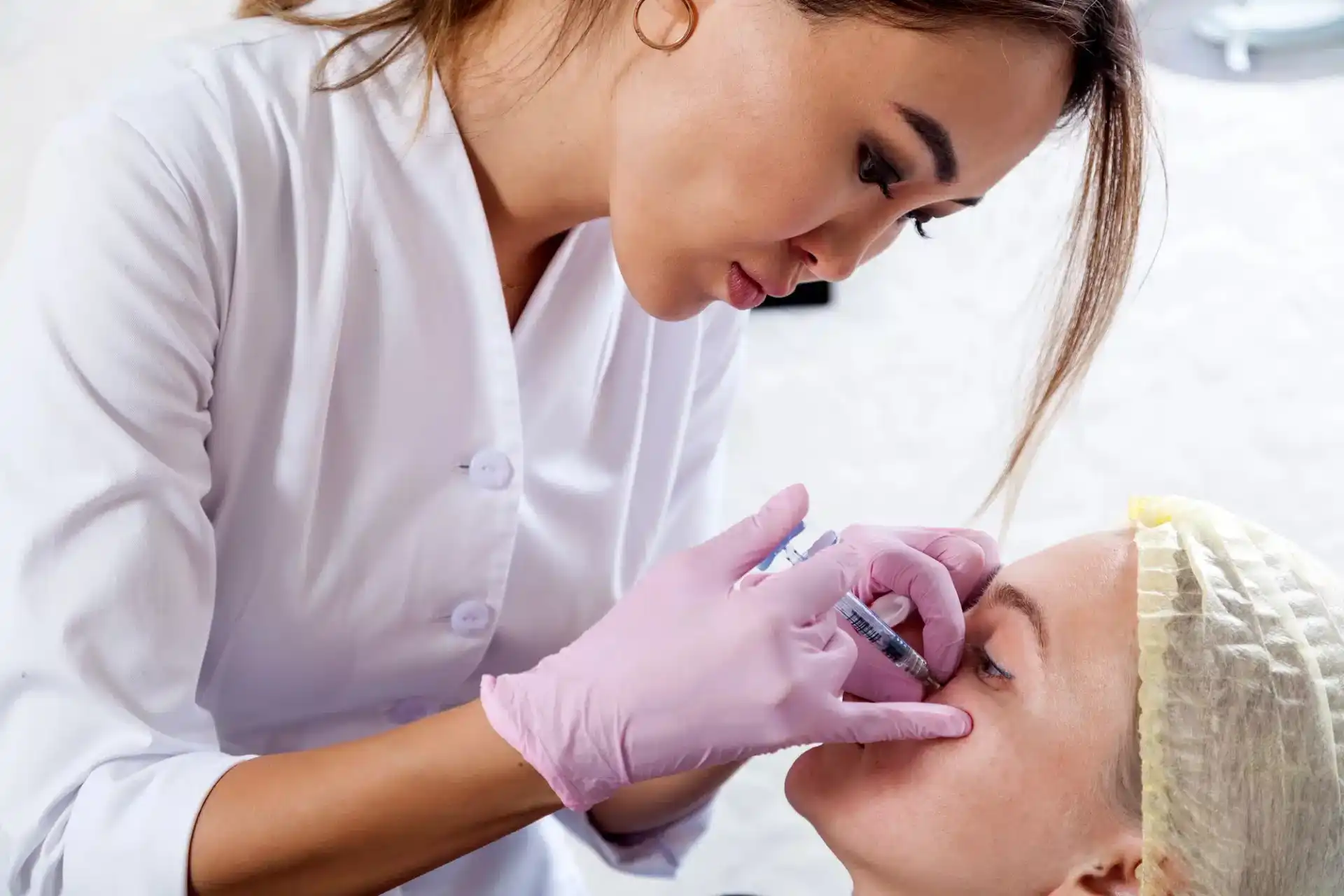Only for Licensed Professionals
Only for Licensed Professionals

Regenerative Aesthetics: Which Products You Need to Have in Your Practice
David Fuller
Last Updated On: October 11, 2024
The new field of regenerative aesthetics is transforming how we think about skincare and aging. Most cosmetic treatments simply combat the signs of aging, but regenerative aesthetics goes one step further by triggering the body to induce cell regeneration processes for lasting rejuvenation and improved skin health.
In this article, we delve into the intricacies of regenerative aesthetics, outline its benefits, and examine the current trends in this futuristic field so you know which products to stock up.
What is Regenerative Aesthetics?
Regenerative esthetics is a branch within the regenerative medicine sector that employs exclusive biological therapies to improve skin quality and appearance. Compared to conventional medical treatments that use cosmetic correction, regenerative aesthetic dermatology offers a more natural and sustainable approach to achieving beauty.
Regenerative medicine in aesthetics involves a number of skincare treatments, including exosomes, platelet-rich fibrin (PRF), and collagen-stimulating dermal fillers such as Sculptra, that help rejuvenate the skin.
Regenerative medicine for aesthetics
In the field of aesthetics, regenerative medicine utilizes agents that stimulate the growth and repair of tissues. Regenerative fillers and regenerative medicine injections concentrate on producing more collagen to improve skin elasticity. Most importantly, they all act by signaling the skin to revert back to its original blueprint, helping the skin not only with wrinkle reduction but overall health, texture, and tone.
The aim of aesthetic regenerative medicine is to rejuvenate the skin and boost its own regeneration process.
Collagen Production and Regenerative Treatments
Collagen is an essential protein needed to provide firmness and a youthful appearance of the skin. As we get older, collagen production slows down, resulting in wrinkles and losing skin. Sculptra will improve the general structure and texture of skin by regenerating collagen production.
This enhances skin softness, firmness, and long-term elasticity, serving as a natural rejuvenation remedy. Sculptra is one of the collagen-stimulating dermal fillers that remain a key product in regenerative aesthetic dermatology.
Advantages of Regenerative Aesthetics Treatments
Regenerative aesthetic treatments are among the most beneficial since they deliver long-lasting effects. Regenerative procedures stimulate the skin to heal, resulting in softer, more natural results compared to traditional dermal fillers.
Additionally, patients have experienced dramatic improvements with skin texture, elasticity and overall vibrancy following regenerative medicine treatments. Another advantage is that these treatments typically require fewer follow-ups, making them both convenient and cost-effective in the long run.
Most Common Regenerative Aesthetic Procedures
- Exosomes: Exosomes are extracellular vesicles that have been demonstrated to be important in intercellular communication. Exosome therapy does the same thing in regenerative aesthetics—it delivers growth factors and cytokines to skin cells, helping them repair and regenerate. In aesthetics, this makes exosomes a principal player in regenerative medicine.
- Sculptra: Sculptra is a commonly used regenerative filler that stimulates the body to produce collagen. Providing gradual progression of powerful and sustained improvement, it is the perfect product for regenerative medicine injections.
- PRF Injections: Platelet-rich fibrin (PRF) is made from a small amount of the patient’s blood. It excretes growth factors that encourage collagen production, helping to smooth skin and reduce wrinkles.
Combining Regenerative Aesthetics with Traditional Treatments
The concepts of regenerative aesthetics and traditional cosmetic modalities are not mutually exclusive; actually, combining the two together is a natural fit that leads to improved patient outcomes.
Combining treatments like microneedling with regenerative injectables like PRF or exosomes enhances their efficiency significantly. Together, these two work synergistically to increase skin rejuvenation by inducing micro-injuries to activate the body’s natural healing process while also naturally increasing growth factors that improve cellular repair and regeneration.
Ultimately, this means that laser treatments’ results—a popular method to even skin tone and texture—can have greater effects over longer periods of time. These hybrid treatments represent a more complete solution for anti-aging and skin resurfacing, making them attractive choices for patients who want to see both immediate and long-term results.
Science Behind Exosomes in Aesthetics
Exosomes represent a novel advancement in regenerative aesthetics; however, what accounts for their efficacy? Exosomes are small vesicles from stem cells that contain proteins, lipids, and RNA critical for cell-cell communication.
On aesthetic treatments, exosomes increase cell signaling to enhance skin repair, produce more collagen and elastin, or inhibit inflammation. They are frequently combined with treatment modalities such as microneedling or laser therapy and can be topically applied to the skin after these treatments penetrate through microscopic channels in the skin, imparting potent regenerative effects.
The world of exosomes is still new and expanding, but initial research yields a beneficial effect on sped-up regeneration, faster recovery time, and overall better skin. This makes the integration of exosomes in aesthetics potentially groundbreaking, giving patients an innovative solution to achieve clear, fresh, and young skin.
Current Trends in Regenerative Aesthetic Treatments
The field of regenerative aesthetics dermatology constantly changes; sporadically, trends develop that promise better results and more satisfied patients.
A significant trend is the advancement of combination therapies that integrate regenerative modalities with cutting-edge technology, such as radiofrequency microneedling.
This combination is synergistic, forcing the skin to rejuvenate by activating both mechanical stimulation and regenerative growth factors, which increase collagen production.
Personalized regenerative treatment protocols, which incorporate specific genetic testing to determine optimal dosing and various therapeutic approaches tailored to each patient’s skin condition, are also among the emerging trends. These new trends in regenerative aesthetic treatments are facilitating more accurate treatments that can be delivered in a precise, personalized manner.
Nutritional Support for Regenerative Aesthetics
Significantly affecting the results of regenerative aesthetic procedures will also be the overall health of the patient and how they care for their nutrition. Vitamins and minerals are vital when it comes to skin health because they contribute greatly towards collagen synthesis and aid in repairing broken or wounded skin cells.
For example, Vitamin C is a critical cofactor in the synthesis of collagen. Additionally, the presence of potent antioxidants can reduce inflammation and enhance the efficacy of a regenerative technique.
Incorporating a holistic approach that includes nutritional guidance can amplify the effects of treatments like PRF and Sculptra. Promoting healthy eating habits that encourage collagen production is thus likely to offer superior, more durable results in regenerative medicine for aesthetics.
FAQ
How is regenerative medicine used in aesthetics?
Aesthetic regenerative medicine uses biological materials, such as PRF, exosomes, and collagen-stimulating fillers, to stimulate skin regeneration and improve the appearance of the skin.
What makes regenerative aesthetics different from traditional cosmetic treatments?
Regenerative aesthetics is different from traditional treatments that only focus on the aesthetic correction. Instead, it works to repair the underlying skin tissue and gives you more natural and long-lasting results.
Are regenerative aesthetic treatments safe?
Generally, regenerative aesthetic treatments are considered safe as they use substances that are naturally present in the body. But it’s important to consult with a licensed medical professional before taking any treatment.
What are the benefits of using PRF in regenerative aesthetics?
PRF (platelet-rich fibrin) is made from the patient’s blood and contains growth factors that stimulate collagen production and skin regeneration. It improves skin texture, decreases wrinkles, and accelerates healing, with natural and effective results.
Can regenerative aesthetic treatments be used with other cosmetic procedures?
Regenerative aesthetic treatments can be combined with other cosmetic procedures such as microneedling or laser therapy, and they can definitely work. The combination of these two helps to increase collagen production and give a more comprehensive and longer-lasting effect.
References
- Sasaki GH. The Rise of Regenerative Aesthetics. https://www.drsasaki.com/blog/the-rise-of-regenerative-aesthetics
- Shira D. Sculptra, PRF, and Exosomes: The Rise of Regenerative Injectables. Forbes. https://www.forbes.com/sites/dahvishira/2024/09/09/sculptra-prf-and-exosomes-the-rise-of-regenerative-injectables/
- What is Regenerative Aesthetics? APT Injection Training. https://aptinjectiontraining.com/blog/what-is-regenerative-aesthetics/
- Journal of Cosmetic Dermatology. Wiley Online Library. https://onlinelibrary.wiley.com/doi/full/10.1111/jocd.15556
- Regenerative Medicine in Dermatology. PubMed. https://pubmed.ncbi.nlm.nih.gov/36988470/
- Zarbafian, Misha, et al. “The emerging field of regenerative aesthetics—where we are now.” Dermatologic Surgery 48.1 (2022): 101-108. https://journals.lww.com/dermatologicsurgery/fulltext/2022/01000/the_emerging_field_of_regenerative.22.aspx
- Rahman, Eqram, et al. “Regenerative Aesthetics: A Genuine Frontier or Just a Facet of Regenerative Medicine: A Systematic Review.” Aesthetic Plastic Surgery (2024): 1-15. https://link.springer.com/article/10.1007/s00266-024-04287-5
- Mehta, Hitaishi, Anuradha Bishnoi, and Sunil Dogra. “Regenerative medicine in aesthetics.” CosmoDerma 2 (2022). https://cosmoderma.org/regenerative-medicine-in-aesthetics/
- Advancements in Regenerative Medicine for Aesthetic Dermatology. MDPI. 2024. https://doi.org/10.3390/cosmetics11020049
Products
Cart
Log In
Newsletter
Subscribe for exclusive offers and updates on new arrivals
Share feedback at:
Working Hours
MON - SUN 9AM to 6PM EST
The Most Popular Brands
Med Supply Solutions
Support
Secure checkout is guaranteed with full adherence to PCI DSS payment standards.
Products listed here are guaranteed authentic and manufacturer-sourced.
Pay easily with trusted providers


*Google and Apple Pay are currently only available via a direct link provided by your account manager.
Copyright 2025. Med Supply Solutions